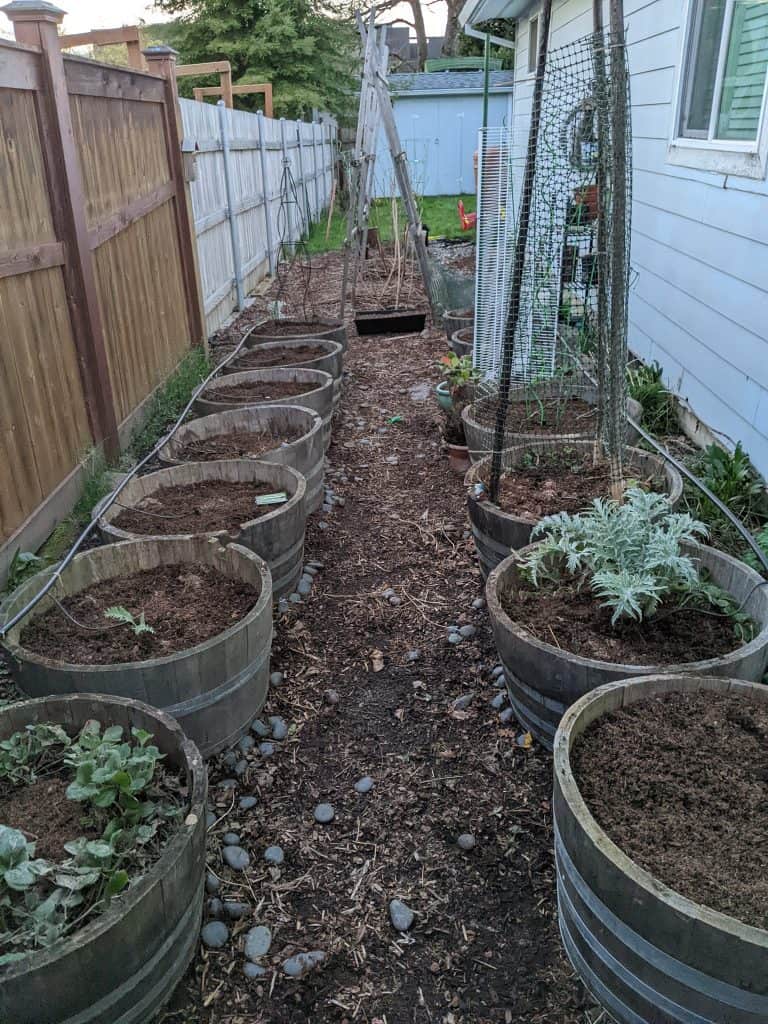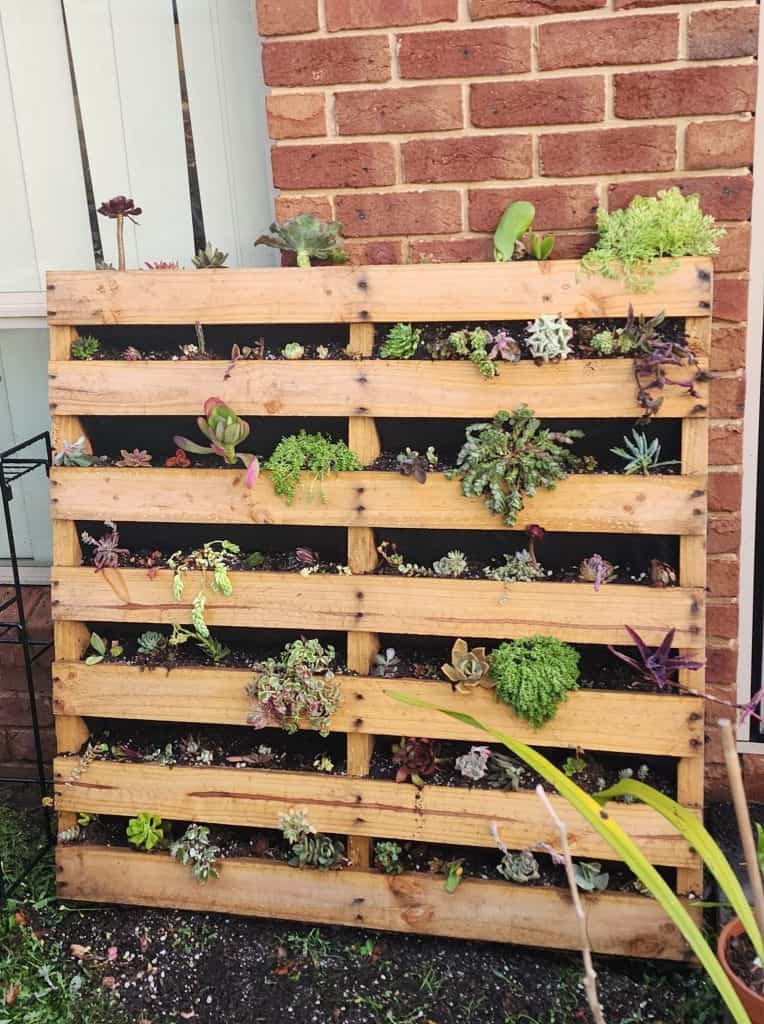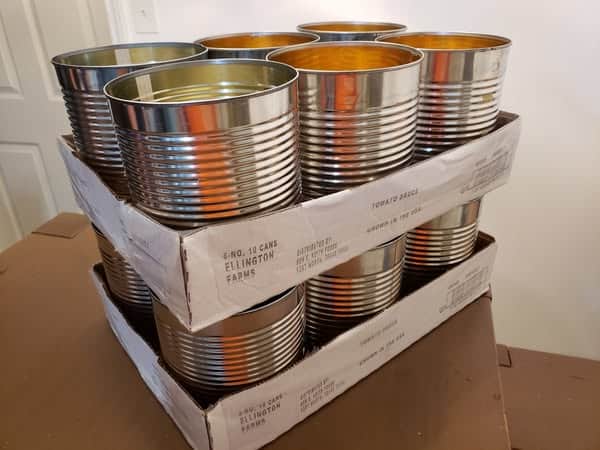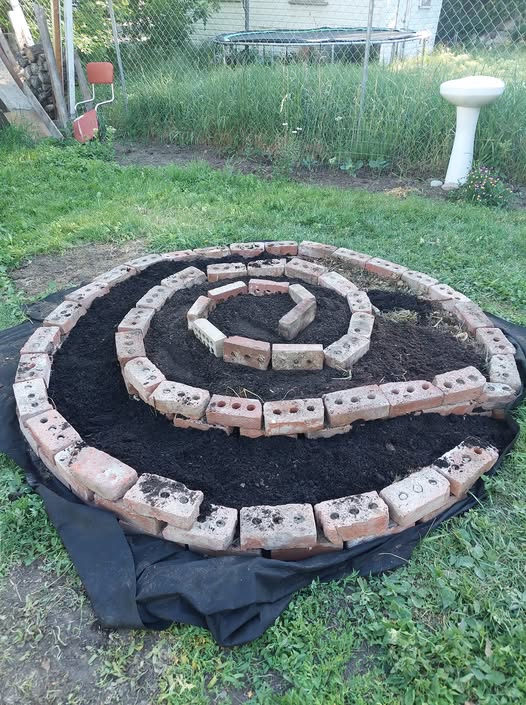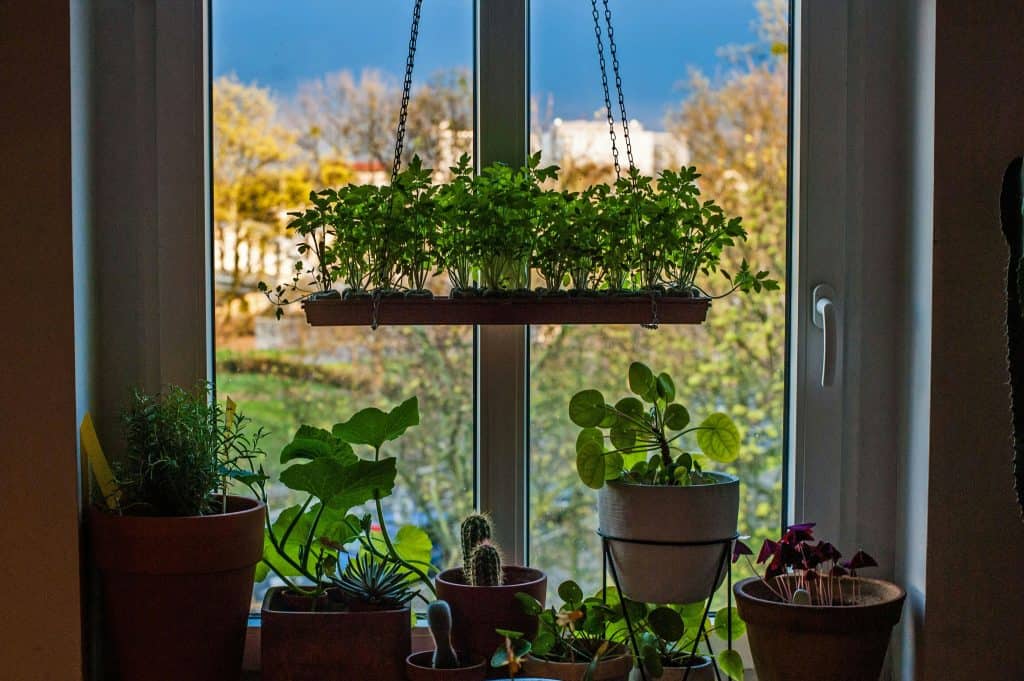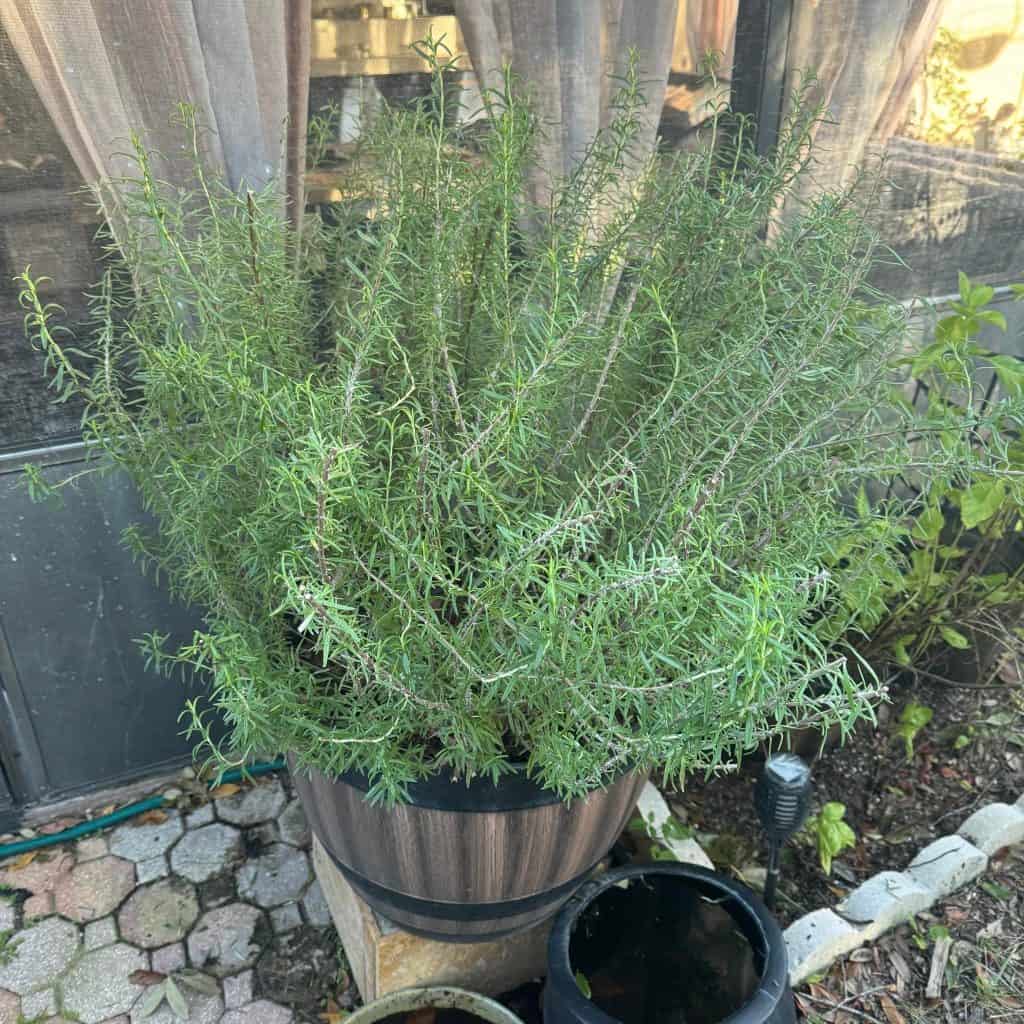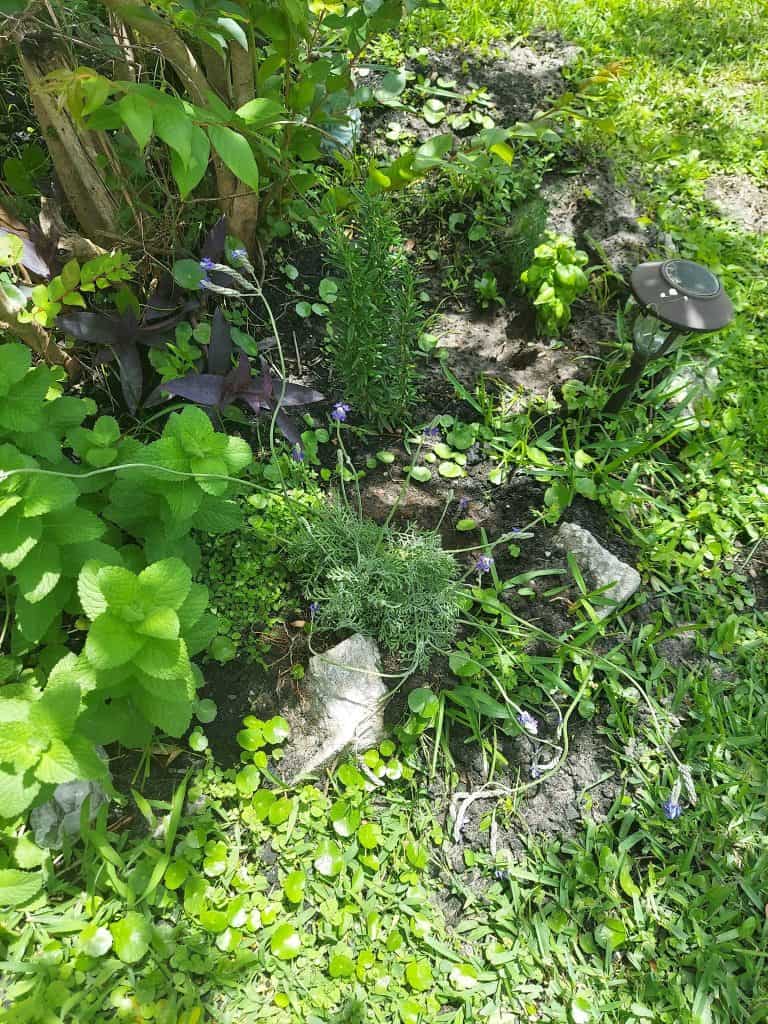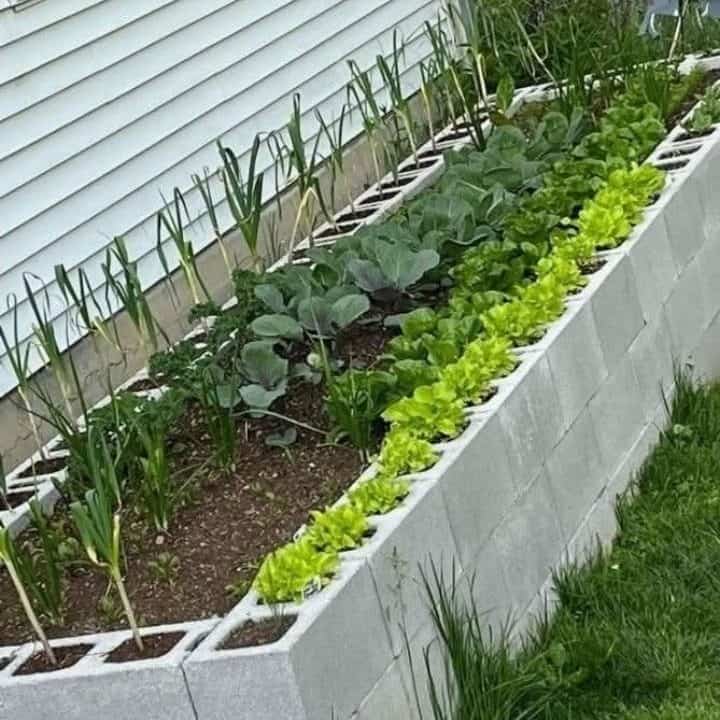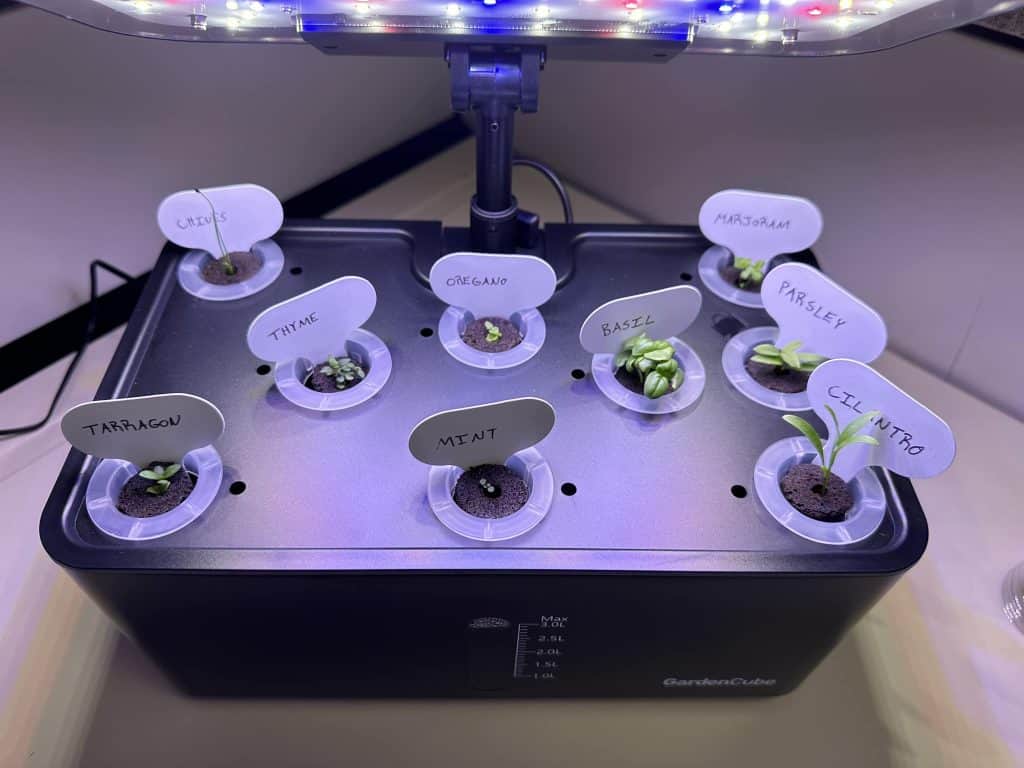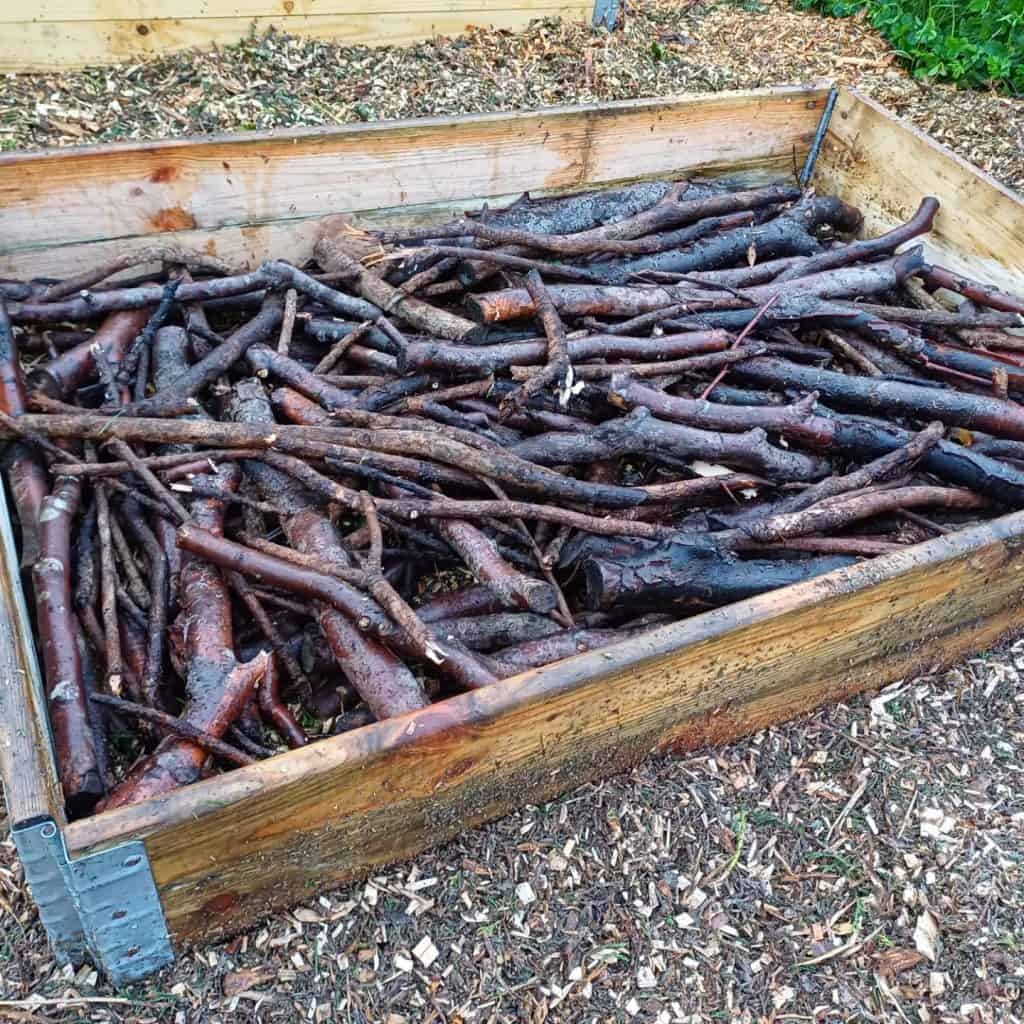Herbs don’t take up much room. They grow fast. And somehow (despite their humble size) they make a kitchen sing. A bit of basil here, some chives over there… suddenly your scrambled eggs have a personality.
But growing herbs? That’s where the excitement really begins.
You don’t need a big backyard. Or a greenhouse. Or even a garden, really. Whether you’ve got an old crate, a tin can, a patio table, or just a sunny window, there’s a way to grow something fresh and fragrant.
In this article, I’ll share a list of 20 herb garden ideas. Some of these setups are tiny. A few are wild and sprawling.
Others just live in cans on a sill. But each one works. And each one brings herbs (real, useful, homegrown herbs) within arm’s reach.
So whether you’re a backyard dreamer, an apartment dweller, or just someone who’s tired of sad store-bought cilantro, one of these ideas is going to click.
1. Tiered Countertop Herb Garden
Set your herb planter right outside the kitchen door – not tucked behind the shed or out by the garden beds. Right there. Close enough that you can lean out in your slippers and snip some basil while the pasta water hits a boil.
This little raised bed on legs? It's more than cute – it’s pure kitchen power in a compact frame. The secret? Rich soil and real compost.
Not store-bought fluff – we’re talking that dark, crumbly, homegrown kind if you’ve got it. Mix it deep. This space is small, but when it’s loaded with chives, thyme, parsley, basil, and a little oregano, it’ll be working hard every day.
And forget the fuss. No fancy landscaping. No overthinking. Grow what you actually cook with. The stuff that hits your cutting board at least three times a week. This isn’t about show – it’s about flavor on demand.
2. The Barrel & Crate Container Setup
Half a wine barrel. Two old wooden crates. That’s the whole setup.
Plant basil, oregano, and parsley in the barrel – something about the depth just suits them. Then toss your mint in a crate. Mint’s a bit of a beast with roots, so the crate keeps it from taking over the rest of your life.
Drill drainage holes. Toss gravel in the bottom (broken clay pots work too). The best part? You can shuffle the setup around when the seasons shift or the sun plays hard to get.
3. The Front Yard Herb Border
People don’t expect to find herbs in the front yard. Which makes this idea kind of brilliant.
Tuck lavender, rosemary, and sage right into your flower beds. Their silvery green tones blend easily with decorative perennials. But unlike those showy lilies, you can actually use these plants.
They smell great. They bring bees. And they give your house the faint whiff of someone who really knows what they’re doing in the kitchen – even if you’re just growing them for looks (no judgment).
4. The Raised Bed Herb Fortress
This one’s about boundaries. Specifically: rabbit boundaries.
Build a 4×4 raised bed from cedar (holds up great in the weather), then wrap it in low chicken wire. Done right, it’ll keep out nibblers while letting your herbs stretch out in peace.
Fill the bed with compost-rich soil. Go for a combo: basil, cilantro, dill, chives. You’ll get a little of everything – flavor, aroma, and color. Bonus points if you throw in a few marigolds. They look cheerful and help fend off bugs. Somehow they do both.
5. The Pallet Wall Planter
Have a vertical surface? Then you’ve got room for herbs.
Take an old pallet, stand it upright, and secure it against a fence or railing.
Line the back with landscape fabric to create pockets. Fill those pockets with soil and tuck in small herbs like thyme, oregano, or dwarf basil.
It’s tidy. It’s space-efficient. And if your garden “space” is really just a balcony, this setup makes the most of it.
6. The Tin Can Windowsill Lineup
This one’s all about charm. And thriftiness.
Gather up some old tin cans (tomato sauce, beans, whatever). Punch a few holes in the bottom with a nail and hammer. Paint them if you’re feeling crafty. Then line them up on your kitchen windowsill and plant rosemary, mint, and parsley.
They won’t take up much room, and when one starts looking tired? Pull it out and swap in something fresh.
Plus, there’s something ridiculously satisfying about grabbing parsley from a bean can while cooking dinner.
7. The Hanging Herb Baskets
If you’ve got a porch or even just a rail, you can hang herbs.
Vintage wire baskets work beautifully. Line them with coconut coir (keeps the soil in place), fill with a good potting mix, and plant something with a trailing habit – think oregano or creeping thyme.
They spill over the edges in a way that looks way fancier than it really is. And if your pets have a habit of digging around where they shouldn't? Problem solved. These herbs are up and out of reach.
8. The Grill-Side Herb Caddy
If you grill even once a month, this one’s a must.
Set up a low shelf or plant stand near your BBQ zone. Load it with terracotta pots—rosemary, thyme, maybe some chili peppers if you’re feeling adventurous.
When the flames are going and the chicken’s just about ready, there’s something deeply satisfying about reaching over and plucking fresh herbs with one hand while tongs are in the other.
It’s not just functional. It feels right.
9. The Spiral Stone Herb Tower
This one looks more complicated than it is.
Start with big stones or busted bricks. Stack them in a spiral shape, working your way up to a raised center. The result? A small, stone-wrapped hill with natural zones for different herbs.
Put drought-tolerant ones like sage or rosemary at the top where the soil stays dry. Keep the moisture-lovers (chives, parsley) near the base where water naturally settles.
It’s clever. Eye-catching. And somehow feels ancient like a tiny, edible ruin in your yard.
10. The Hanging Windowsill Herb Bar
You know those curtain rods that hold up nothing but old dust?
Put one to work. Mount a metal rail or slim rod above your kitchen windowsill. Then use hooks to hang small pots or jars filled with soil. (Herbs: basil, oregano, and mint are winners.)
This setup is ideal for tight indoor spaces. It keeps your windowsill clear while turning dead air space into a tiny herb jungle.
Watering’s easy. Harvesting’s easier. And yeah – it looks pretty cool too.
11. The Wooden Spoon Label Garden
You know those plain metal plant markers that bend after one week in the sun? Forget them.
Instead, grab a few galvanized tubs and fill them with mixed herbs – whatever’s in season, or whatever you forgot to buy last time you needed it (looking at you, cilantro). Then grab some old wooden spoons, paint the handles with the herb names, and stick them in the soil.
It’s charming. It’s clear. And it keeps you from accidentally plucking mint when you meant to get basil. (They all look alike after a while.)
12. The No-Fuss Perennial Patch
Some folks like starting from seed every spring. Others want herbs that just… keep showing up.
For them: a small perennial herb bed is the dream. Plant rosemary, sage, thyme – anything that doesn’t die the moment it snows – and give it a proper mulch blanket.
This patch basically takes care of itself. A bit of trimming here, a splash of water there, and you’re good. It's not flashy. But it's dependable. Like that neighbor who always has jumper cables.
13. The Vintage Container Display
If you haunt thrift shops or flea markets “just to look,” this one’s for you.
Collect old enamel pots, chipped teapots, or even a dented bread tin. Plant herbs in them – dill looks especially whimsical in a blue kettle, by the way – and arrange them on a weathered table or shelf outside.
It’s not just gardening – it’s full-on cottage-core. And if one container rusts out? Swap it. Or let it rust more. That’s the aesthetic.
14. The Edible Flower Herb Combo
This one does double duty: flavor and flowers.
In a big raised planter, pair herbs with edible blooms. Calendula next to parsley. Lavender with thyme. Chives nestled beside nasturtiums. Not only do they look incredible when they bloom, but every single plant in the box is edible.
Bees love it. So do salads.
Just be warned – once you grow herbs this pretty, people stop believing you actually use them.
15. The Aromatic Herb Pathway
Some herb gardens whisper. This one wafts.
Create a walkway with flat stepping stones, then fill the spaces between them with creeping thyme or Corsican mint. As you walk, the leaves release their scent. It's like nature’s aromatherapy—every step is its own little moment.
Works best in sunny spots where foot traffic is regular but not constant. (And yes, it’s totally okay if you walk that path more just because it smells good.)
16. The Evergreen Herb Border
This one’s for folks who want herbs that look like landscaping – because they are.
Plant woody perennials like lavender, rosemary, and sage along the edge of a veggie bed or patio. These herbs hold their shape, hold their color, and hold their own through cold months.
You’ll get structure even in winter, and come spring? Just snip and use. It’s like a hedge you can eat.
17. The Pollinator Herb Strip
This is less garden, more buffet – for bees and butterflies.
Use bricks to outline a long, narrow bed, then plant herbs like dill, fennel, and borage. Toss in some native wildflowers if you’re feeling generous. The result? A humming, fluttering, buzzing strip of life.
Somehow, these herbs serve a double role: flavor for you, habitat for pollinators. And the fennel? When it bolts and flowers – it’s like fireworks on a stick.
18. The Herb Table Planter
Okay, this one turns heads.
Build (or buy) a chunky outdoor coffee table with a planter box built into the middle. Fill it with soil. Drop in mint, thyme, and whatever you think smells nice when you’re drinking iced tea outdoors.
You’re not just growing herbs – you’re growing conversation. People will ask about it. They’ll hover. They’ll try to pinch a sprig without asking. Happens every time.
19. The Hydro Herb Station
Not everyone wants dirt on their counter. For those folks: hydroponics.
Set up a simple indoor hydro unit – compact ones sit right on the counter—and grow basil, cilantro, and parsley. No soil. No bugs. Just water, light, and daily smugness from growing your own seasoning 18 inches from the stove.
It’s tidy. It's efficient. And if you’re the type who forgets to water things? These systems kind of do it for you.
20. The Hügelkultur Herb Mound
Yes, it has a weird name. No, it’s not hard to make.
Stack logs, branches, compost, and soil into a raised mound. Then plant perennial herbs like lemon balm, echinacea, and sage at the top.
The mound slowly breaks down over time, feeding your herbs from within. It’s like building a mini hill that composts itself – satisfying on so many levels. And once it settles, it holds water beautifully.
Somehow, it just works. Even if you don’t understand why.
Ready to grow your own fresh flavors? Grab your favorite idea, gather your materials, and start planting today – your taste buds (and kitchen) will thank you!
Herb gardens aren’t one-size-fits-all. That’s the fun of it.
You can go big with raised beds and stone spirals or go small with a few cans on the windowsill.
Some setups take a Saturday afternoon and a pile of tools. Others? A spoon, a crate, and a bit of dirt. Whatever your time, space, or budget looks like, there’s something in this list that’ll work for you.
And the best part? Once you start harvesting your own herbs – cutting what you need, when you need it – it’s hard to go back to the plastic clam-shells from the store.
So pick one. Or two. Or cobble together bits and pieces from five different ideas and make your own weird, glorious herb garden.
There are no rules – just a lot of fresh flavor waiting to happen.
Frequently Asked Questions (FAQs)
Got questions about starting your own herb garden? Here are some quick answers to common concerns, from easy herbs for beginners to keeping your garden healthy and low-maintenance.
1. What are the easiest herbs to grow for beginners?
Start with basil, chives, parsley, and mint. They’re forgiving, grow fast, and give you plenty of payoff even if you miss a watering or two.
2. How much sunlight do herbs typically need?
Most herbs love the sun. Aim for 6–8 hours of direct light a day. South-facing windows or sunny patios are ideal. Shade-tolerant options? Mint and lemon balm will tolerate a bit less.
3. Can I grow herbs indoors all year round?
Absolutely. Just make sure they get enough light – either from a sunny windowsill or a grow light. Keep them warm, and don’t overwater. Indoor hydroponic systems help too.
4. Which herbs repel pests naturally?
Basil, mint, lavender, rosemary, and chives can all help deter common garden pests. Bonus: they smell great and look good while doing it.
5. How do I keep my herb garden low-maintenance?
Stick to perennials like sage, thyme, and oregano. Use mulch to lock in moisture and block weeds. And don’t overthink it – herbs are surprisingly tough once they’re established.
Ready To Transform Your Garden?
Are you looking for the best way to layout your garden beds? Maybe you're feeling a bit stuck on how to make the most of your space?
We’ve got you covered! Check out our 101+ Garden Bed Layout Ideas for your next raised bed project. This guide is filled with creative and practical ideas that can help you design a garden that fits your style, whether you’re just starting out or have been gardening for years.
Get your copy today and get inspired to bring your gardening dreams to life.


